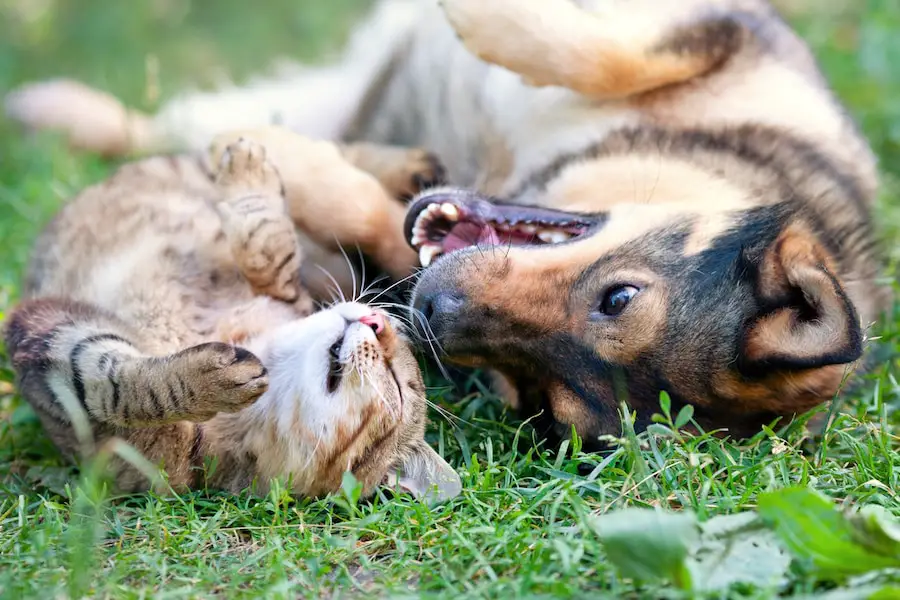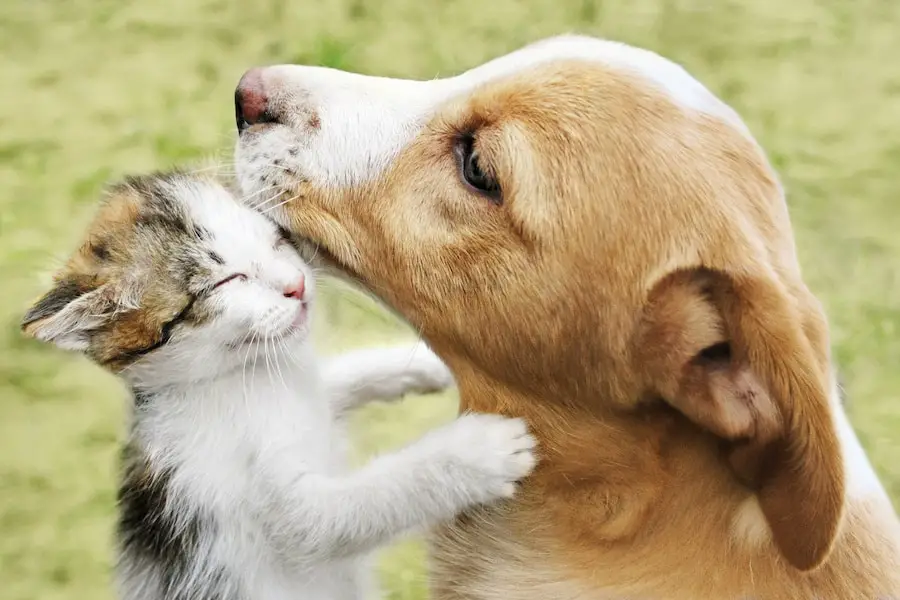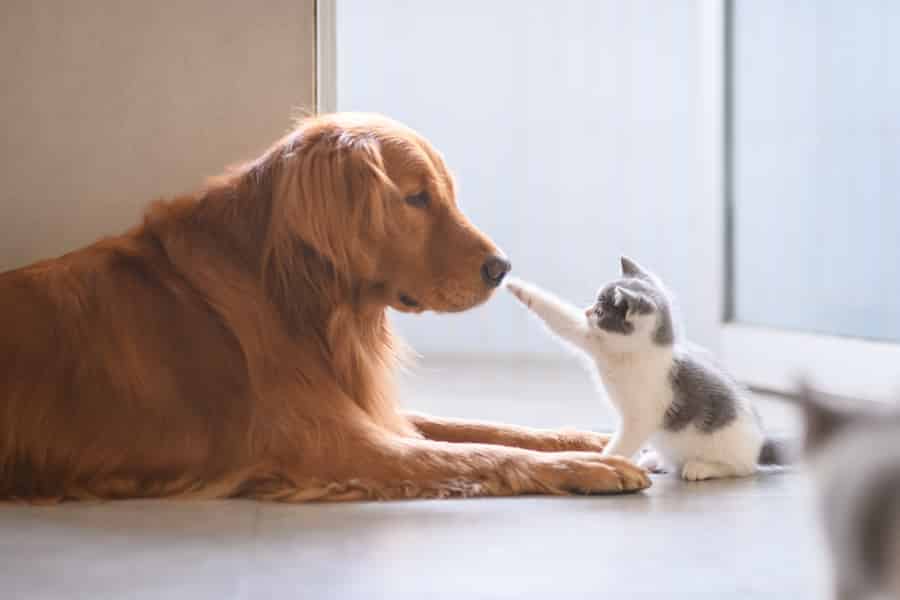INTRODUCING CATS AND DOGS: THEY CAN BE FRIENDS!
Adding to your fur family is an exciting time, however, it can also be nerve-wracking predicting how your current pets will react to a new arrival. The key to introducing a new pet to your current fur babies is to take it slow. Many rescues will test dogs to ensure that they are friendly towards cats; and test cats to see if they handle the presence of a dog well. Your pets have the rest of their lives to rumble and play, so forcing the process early on can be detrimental for the entire household. In this article, we’ll talk about how you can introduce a new dog to a cat household and how to introduce a new cat into a dog household.
Introducing a new dog or puppy to a cat household
Cats do not like change. Bringing a new animal into your cat’s territory will likely be an unsettling and stressful experience for him/her. Luckily there are things you can do to try and make the transition smooth and relatively stress-free.
Planning needs to start weeks before introducing the new dog. Create a room in the house as your cat’s ‘safe place.’ In this safe place put your cat’s food, water and litter box. Moving all these items can be done over a few weeks so as not to unsettle your cat with an abrupt change, or you may opt to duplicate and provide a second set of food, water and litter in your home. Ensure all items are moved with at least a week to spare before your new dog arrives to allow your cat to adjust to changes in his/her environment. Introducing the new dog’s toys, bed, food and water bowls should also be done at this time. Let your cat sniff these items to get used to them prior to the dog’s arrival. When your new dog arrives, the only ‘new’ thing that your cat should encounter is the dog itself.
On the day the new dog arrives put your cat in his/her special safe place and close the door. For the first few hours, your cat will remain in the room while your dog explores the house. Play with your dog vigorously to tire him/her. Next put your dog outside or in a separate room and allow your cat to explore the house without seeing the dog, but being able to smell the dog’s presence. This gives your cat the chance to smell where the dog has been. Let your cat wander around in the house for a few hours until he/she seems relaxed.

When it’s time for your pets to see each other for the first time, use a screen door as a barrier between the two (dog outside cat inside works well). Distract your dog with treats while your cat approaches the screen. Feed both animals on either side of the screen. Speak softly to both the dog and cat to reassure them. Your cat will likely growl or hiss at your dog; this a normal fear response. Give your pets plenty of hours of observing each other on either side of the screen. If either party shows overt signs of aggression stop the interaction.
Overnight keep both animals separate. Repeat the screen door introduction the next day. Once both pets seem relatively relaxed and will tolerate each other you can introduce without the screen. Do not attempt to do this until both animals are ready; this can take many days or even weeks for some pets to adjust.
Before your dog and cat meet without a barrier between them exercise your dog. You want your dog to be sleepy, not energetic and overexcitable. Put your dog on a lead, and ensure you have control of both animals at all times. Do not force both dog and cat to meet face to face. Feed your dog treats while your cat approaches to smell your dog. Repeat this process with your cat. Do not let your dog chase your cat if he/she backs away. Keep all interactions positive.
The first introduction should be short. Once all treats have been used up, separate the cat and dog again with the screen door. You can try again in a few hours, this time for a longer time period. Do not let your pets interact alone until you can be sure that they will both be safe.

Introducing a new cat or kitten to a dog household
Introducing a cat to an existing dog household is much the same as above. Set up a room for your new cat including food, litter etc. You can also try using a synthetic hormone product called ‘Feliway’ to help your cat adjust. Feliway is a synthetic hormone analogue based on the marking hormone cats secrete from under the chin. Spraying this product around the cats ‘safe room’ may help him/her settle into their new home. For the first day, your cat should stay in this room and only interact with your dog under a closed door. The second day take your dog out of the house (on a long walk or trip to the beach!) and allow your cat to explore the house under supervision. Use toys to encourage exploring beyond the safe room. When your dog returns put your cat back in the safe room. Allow your dog to smell where the cat has been and interact with the cat under the door. Repeat this process for another day and if possible, allow your cat several hours to explore the house.
On day three, attempt a screen door interaction as described above so long as no aggressive behavior has been observed. Do not force the animals to meet through the screen door. Instead you should allow the cat to approach in his/her own time from the safe room. Allow the cat and dog to interact through the screen door until they are comfortable with each other’s presence. Once they are relaxed you can attempt an introduction without the screen in place as described above. Again, it may take a while before both animals are comfortable enough to introduce.
The time in effort you put forth in carefully introducing your cat and dog will be worth it in the end! Your pets can become best friends instead of ‘fighting like cats and dogs.’
About the author
Dr. Bethany Richards (BVSC) is a cat lover and the principal vet at Southern Cross Vet and The Lion’s Den. She enjoys all aspects of veterinary medicine and has a special interest in promoting animal welfare. Dr. Beth is part of the Animal Ethics Committee at the Children’s Medical Research Institute in Sydney. In her spare time, Beth cares for her ex-stray cats Gracie and Neko.
